Welcome to The 6 Best Places to See Cheetahs.
Dreaming of a wild cheetah encounter? Look no further. Dive into our latest article for an up-close introduction to these enigmatic felines and discover their natural habitats in the wild!
Video is at the End of the article!
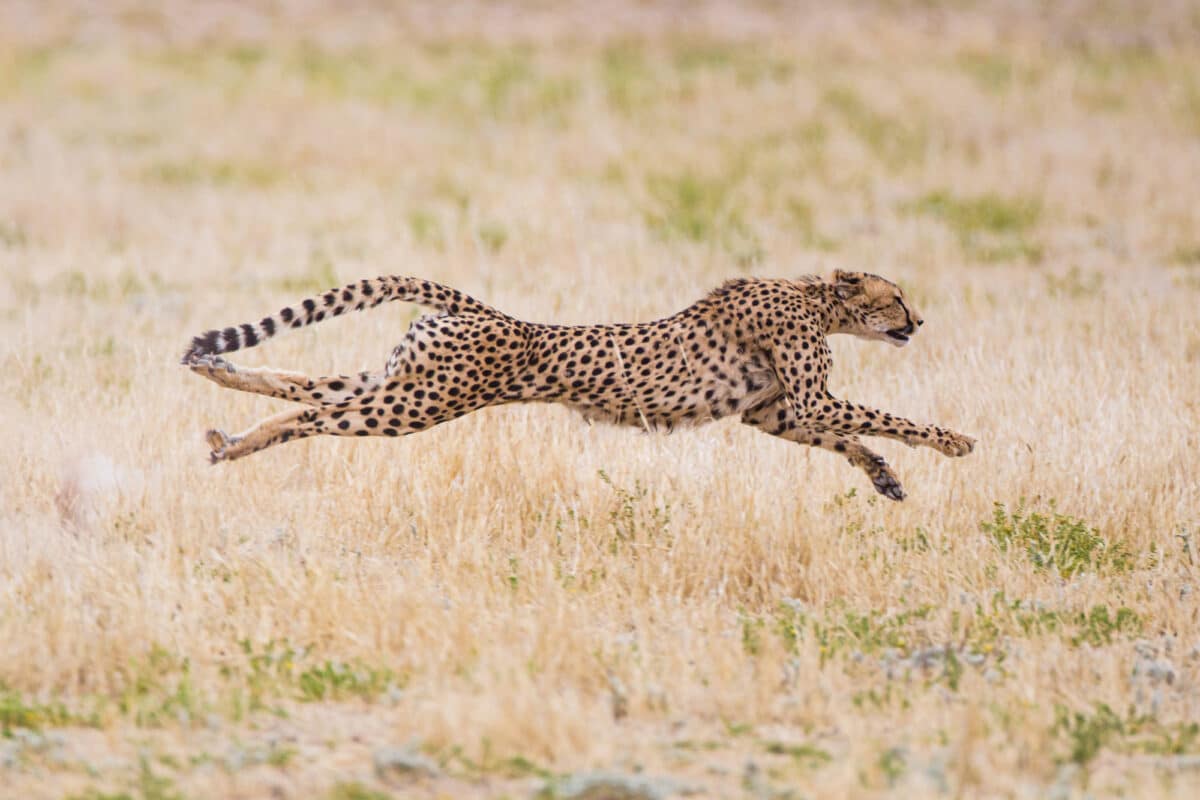
You can read the entire article or jump to any section:
The 6 Best Places to See Cheetahs
Cheetah facts
Did you know that cheetahs have between 2,000 and 3,000 spots? And that these spots help them to camouflage themselves?
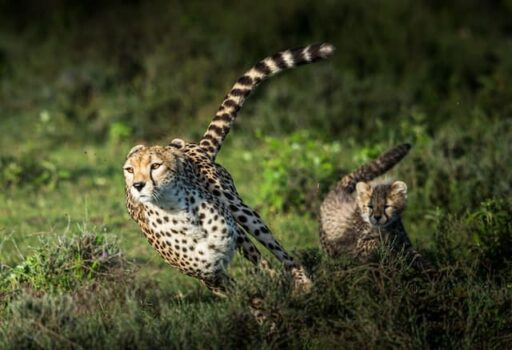
Want to find out even more about Cheetahs? Then you’re in the right place!
Appearance
The word “Cheetah” is derived from the Hindi word “Chita” meaning “spotted one”. This is very apt, as cheetahs have a pale yellow coat with black dots on the upper parts, and are white on the underbelly.
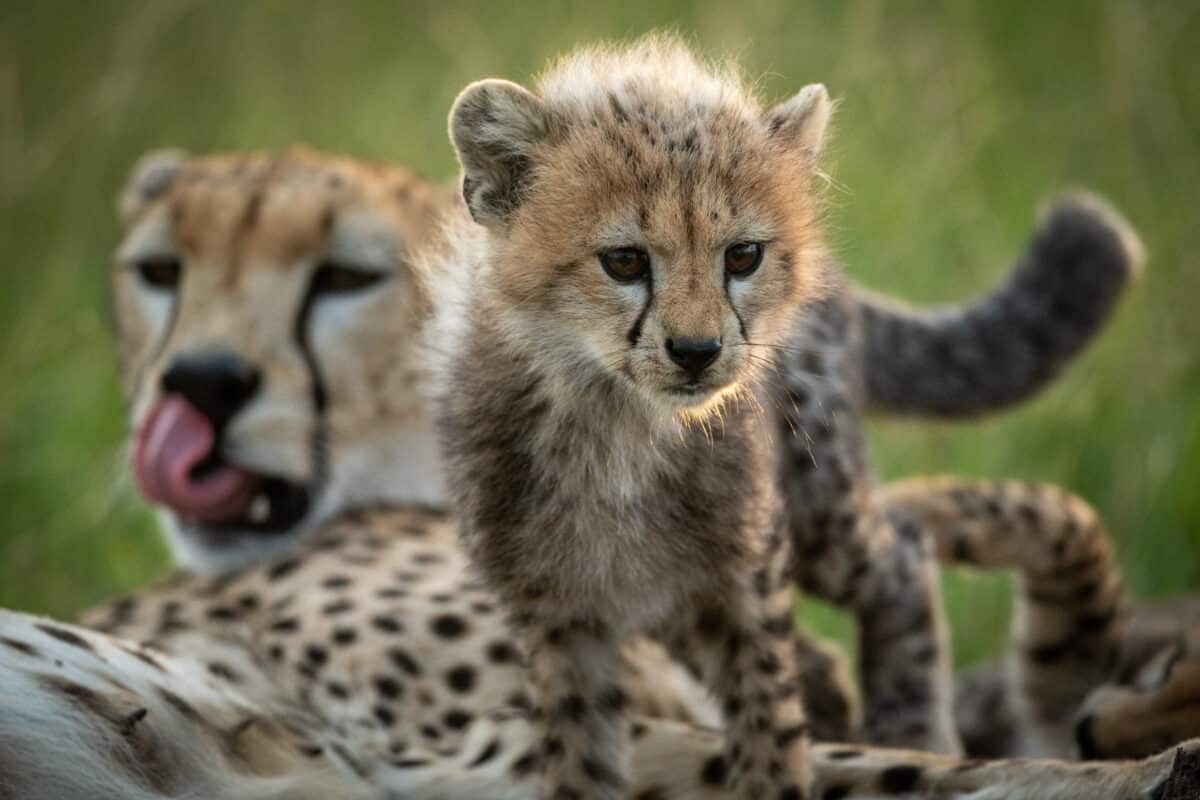
Their faces are distinguished by prominent, black lines that curve from the inner corner of each eye to the outer corners of the mouth.
Cheetah cubs grow quickly in size but are distinguishable by the fluffy grey tuft of hair that runs along the backs of their necks.
Did you know you can also walk with Lions?
Social animals?
Cheetahs are fascinating creatures, embodying a unique blend of solitary and social behaviors.
In the cheetah world, female cheetahs primarily lead a solitary life, except when they are raising their adorable cubs. These cubs rely on their mothers for support and guidance for a considerable period, typically spanning from 12 to 20 months. However, this tight-knit family dynamic eventually changes as the cubs grow.
Once the young cheetahs leave their mother’s side, they generally stick together as siblings for a relatively short span of around six months. After this, they face two divergent paths: some opt for the solo life, while others join forces in a unique brotherly alliance. This coalition of male siblings becomes a tight-knit unit, sharing the trials and triumphs of life as they live and hunt together. It’s a testament to the intricate social structure of these magnificent big cats.
Cheetahs are unique in the cat family
In comparison with other big cats, cheetahs are significantly smaller and lighter than leopards and lions.
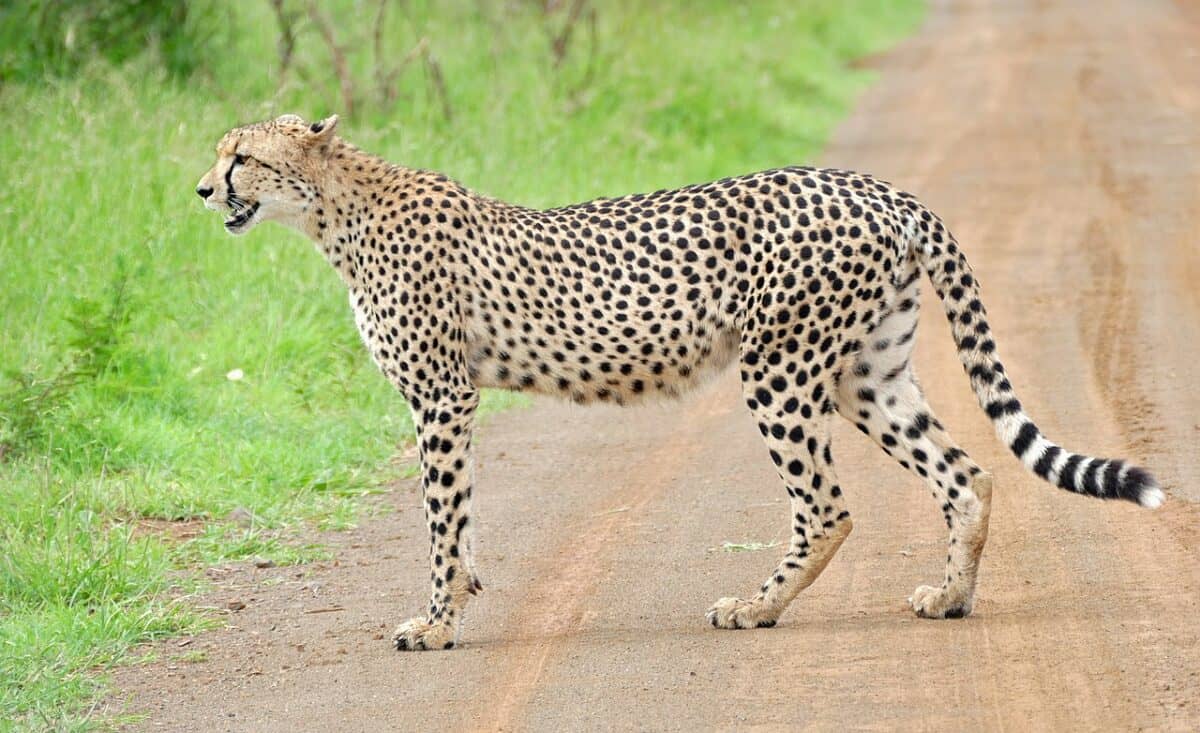
Although they are the smallest, cheetahs have the longest legs of any cat. This is what enables them to have a stride of over 10m in length – perfect for those long chases over open ground.
They also have non-retractable claws – more like dogs than cats!
Communication
Another factor that distinguishes the cheetah from other big cats is the fact that it cannot roar!
Do you want to read about the jaguar as well? Have a look.
In the realm of big cats, such as lions, tigers, and leopards, cheetahs stand out for their remarkably extensive vocabulary and multifaceted means of communication. These incredible creatures express themselves through a rich tapestry of sounds and actions.
When it comes to vocalizations, cheetahs employ a wide range of expressions, including purrs, bleats, barks, growls, hisses, and a distinctive high-pitched chirping sound. What’s truly remarkable is that each of these vocalizations carries a specific message. For instance, various types of chirping might serve as a mother’s way of imparting instructions to her cubs or a female’s attempt to attract a potential mate.
Beyond their vocal repertoire, cheetahs communicate through marking. They leave their unique signatures on the landscape by either urinating or rubbing their cheek and chin on objects. These markings contain chemical information about the individuals, essentially acting as personal scent profiles. By marking their territory in this manner, cheetahs not only establish their presence but also facilitate peaceful coexistence by avoiding unnecessary confrontations with others. It’s a complex and fascinating form of communication that underscores the intricacies of cheetah social dynamics.
The fastest land mammal
The cheetah is the fastest land animal in the world, reaching speeds of up to 70 miles per hour. They can accelerate from 0 to 68 miles per hour in just three seconds – that’s faster than a sports car accelerates!
Look at this stunning video that shows the science behind a cheetah’s fast run in slow motion:
Built for speed
The cheetah is a striking example of nature’s impeccable engineering, boasting a suite of evolutionary adaptations finely tuned to its high-speed lifestyle. Here’s a glimpse into the fascinating world of these magnificent creatures, with insights from “The 6 Best Places to See Cheetahs.”
Cheetahs are built for speed, and it shows in every aspect of their anatomy. Their long legs, extended spine, specially adapted claws for gripping the ground, and an elongated tail all contribute to their remarkable swiftness. In fact, cheetahs are the sole big cats capable of executing mid-air turns while sprinting, a testament to their agile prowess.
Beneath their sleek exterior lies a finely tuned inner machinery. Cheetahs possess a long, supple body supported by remarkably lightweight bones. This efficient design is complemented by generously sized nasal passages and oversized vital organs—lungs, liver, heart, and adrenals—enabling lightning-fast physical responses.
But perhaps one of the most intriguing features is their long, muscular tails. Shaped flat, these tails serve as vital instruments for maintaining balance and precision steering. In essence, they function like a rudder on a boat, allowing cheetahs to execute sharp turns with finesse while hurtling at breakneck speeds. It’s nature’s engineering marvel in action.
Hunting
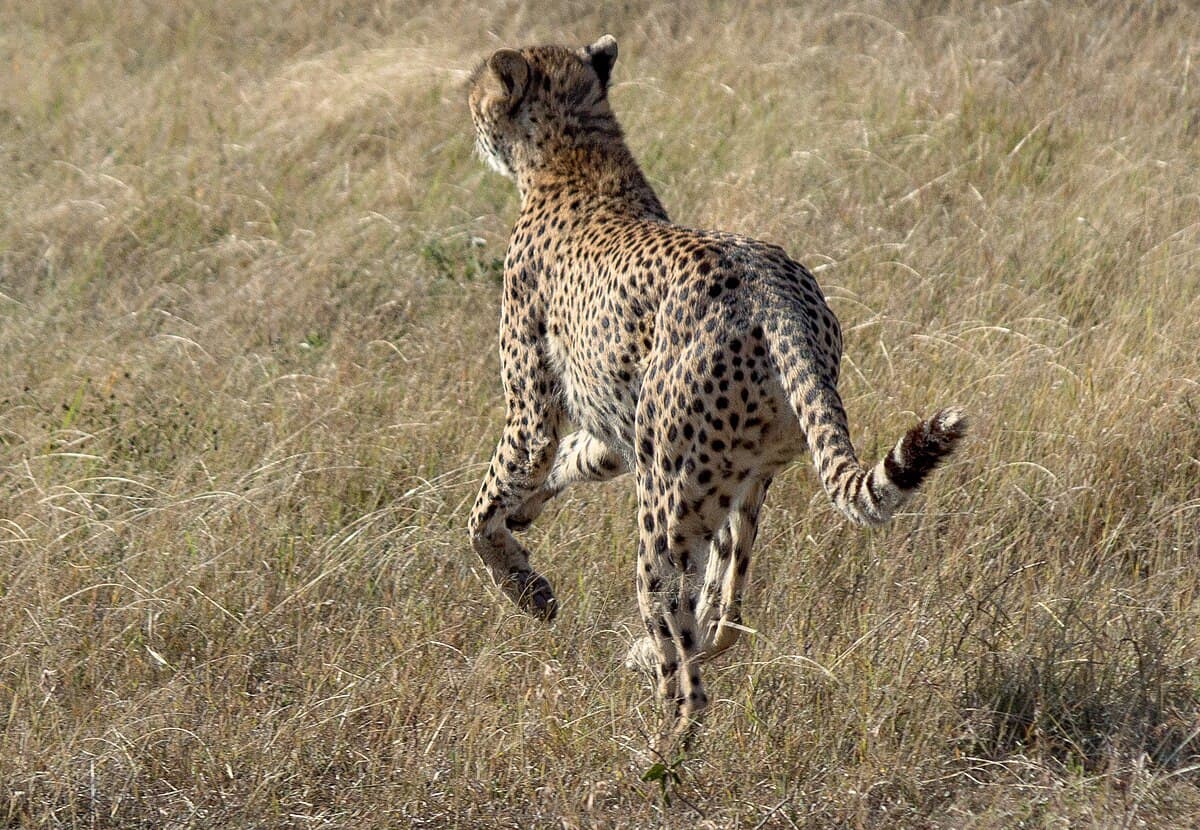
Unlike other big cats, cheetahs hunt mostly by day. This is partly because their hunting success depends on long lines of sight, but it also enables them to avoid nocturnal predators such as lions, leopards and spotted hyenas – all of which will drive cheetahs from their kills.
Their incredible speed allows them to run up to 105km/h (around 65 miles per hour). But this uses so much of their energy that they are unable to maintain such speeds over long distances. So their chase can only last for half a kilometer.
Definitely not a way to Encounter Wild Cheetahs.
Diet
Cheetahs in Africa prefer to hunt impala and gazelles, but they have also been known to bring down nyala, which can be twice the body weight of an adult cheetah.
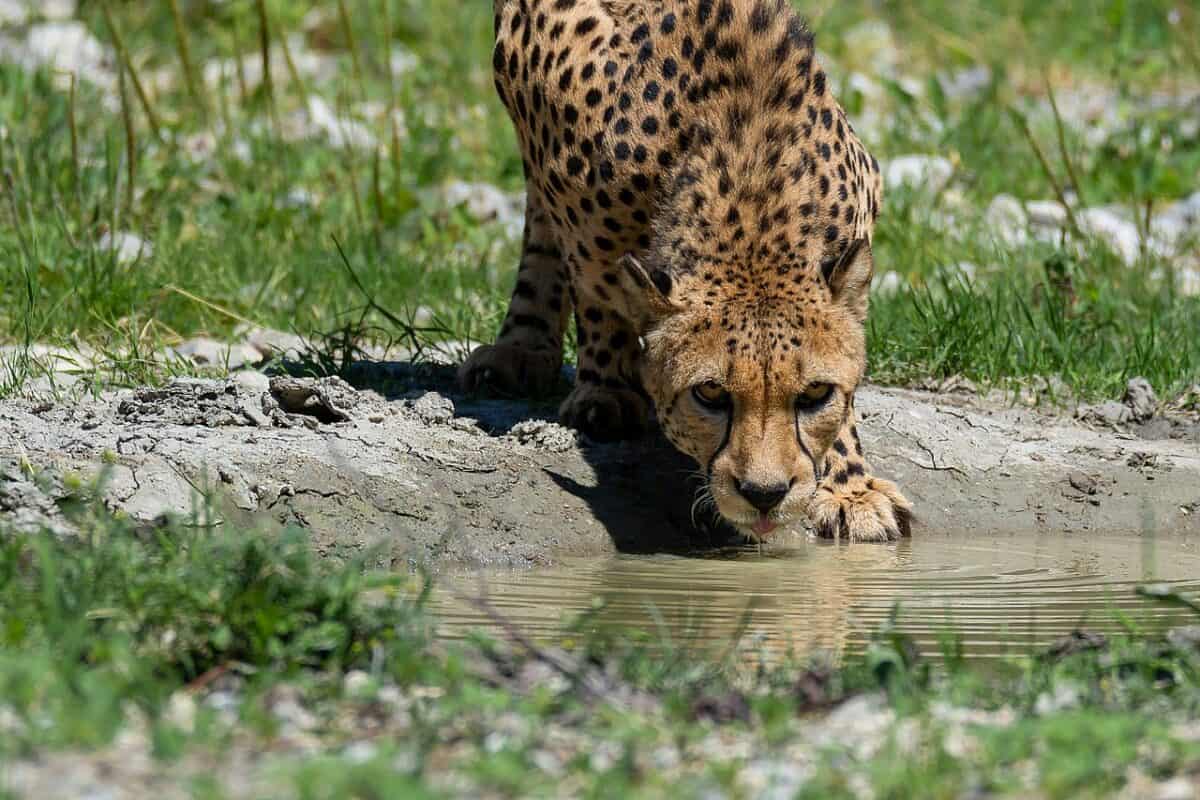
They also prey on young wildebeest and zebras. They have been known to prey on sheep and other small farm animals, which means farmers are likely to set cheetah traps and kill them in order to protect livestock.
Cheetahs are adapted to live in very dry environments and open plains, so they can go up to four days without a drink of water.
Where do cheetahs live?
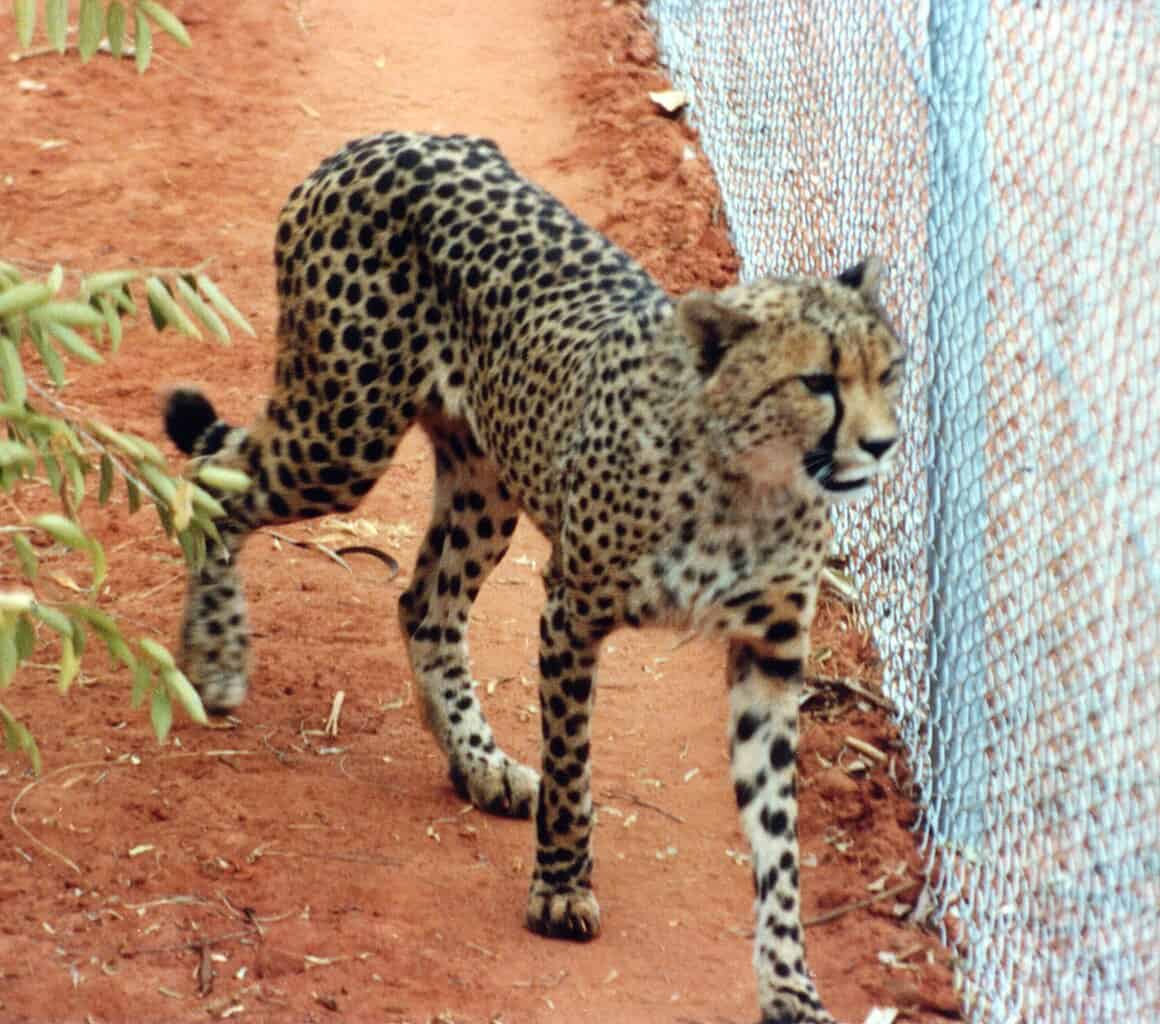
Cheetahs live in a variety of environments. According to the African Wildlife Foundation, cheetahs can be found in dry forests, grasslands, open plains, and desert regions.
Distribution
Cheetahs once lived all across most of Africa, as well as in the Middle East and Indian subcontinent. Now they are restricted to small numbers in highly fragmented populations.
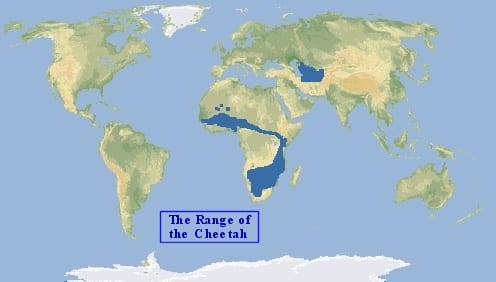
The majority of wild cheetahs call sub-Saharan Africa their home, where they gracefully traverse expansive grassy savannah plains and open forests. However, a tiny population of these magnificent cats also exists in northeastern Iran, albeit in dwindling numbers, with just a few dozen individuals still holding on in this region.
Cheetah conservation
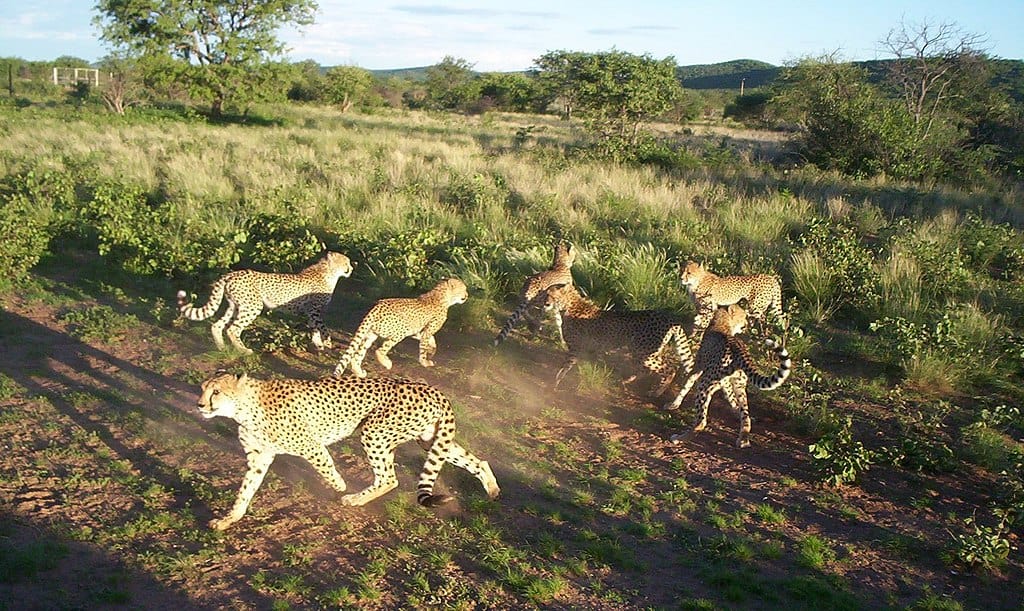
A landmark study in 2016 found that just 7 100 cheetahs remain in the wild. Almost half of these live in Southern Africa – the cheetah’s last stronghold. Namibia has the world’s largest population, but the increasing conflict between cheetahs and farmers due to human encroachment on former wilderness areas are threatening their population.
Cheetahs are classified as endangered by the IUCN Red List of Threatened Species. With less than 10 thousand individuals left in the wild, cheetahs are now Africa’s most endangered big cat.
Endangered species
The 3 main reasons that cheetahs are endangered are: hunting, habitat loss and poor genetic diversity.
Historically, cheetahs have been hunted for their fur, but today some of the biggest threats to their survival are loss of habitat, and competition for resources.
Cheetahs require large areas of land for survival, so increased human settlements and road construction encroaching in their habitat poses a serious risk to their survival.
Genetic diversity
Good genetic variation between individual animals of the same species is essential in order to protect the species from genetic problems, infectious diseases and other health issues.

This ensures that the species, individually and as a whole, can adapt to changes in the environment and can continue to survive.
About 10 000 years ago extreme climatic changes drove many animal species to extinction. The cheetah species that survived this period found itself in a genetic bottleneck with only a few animals left. This led to close relatives mating with one another and resulted in genetic inbreeding. Genetic ecologists believe that this is what caused the cheetahs to lose their genetic diversity as time went by.
Conservation efforts
Conservation efforts are underway to enable the population to regrow. Amazing groups such as the African Wildlife Foundation and the Cheetah Conservation Fund work with local communities near cheetah populations to create sustainable solutions where there is human-animal conflict.
Protected areas and wildlife parks, such as the Cheetah Experience in South Africa, protect cheetahs when their habitat is destroyed.
Encounter cheetahs in the wild
Most people list the leopard as the most elusive of the big cats to locate on safari. In truth, cheetahs on safari can be even more difficult to sight because they are less abundant.
Regular sightings of cheetah on safari are usually sporadic and local, so don’t be discouraged if it takes you a few days to spot one.
The best places to see cheetahs would be on a wildlife Safari in Africa. We’ve put together the top places where you can see cheetahs in their natural habitat:
1. South Africa
South Africa is a country absolutely brimming with immense natural beauty and friendly people. So there are many more reasons to visit this beautiful country than cheetahs alone.
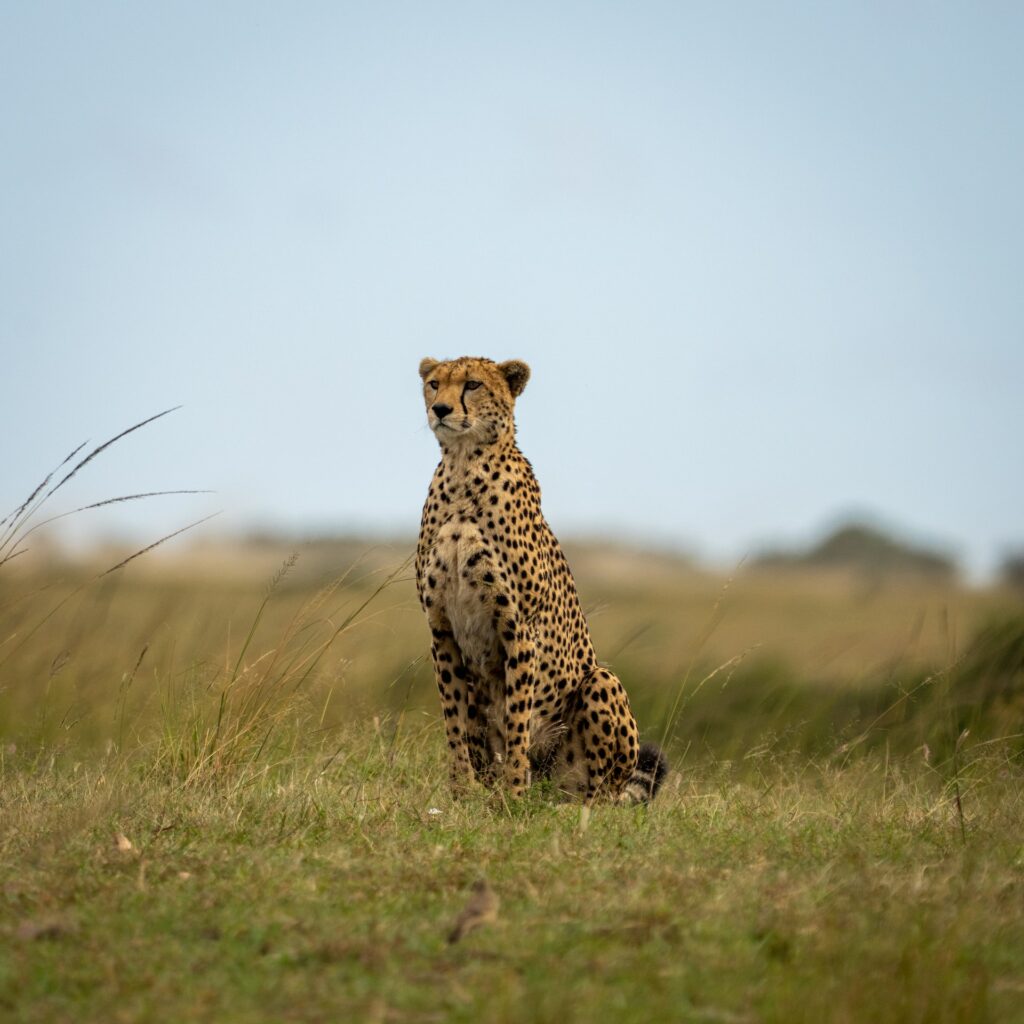
There are many places where you can expect to see cheetahs in South Africa:
Kruger Park has a robust population of all kinds of wildlife, not just the big cats. While the cheetah is the least common cat in the park, the current population is around 200, making your chances of seeing them decent. The private reserves around the park are also top-notch for cheetah sightings, particularly the Sabi Sand private reserve
The Sabi Sands Private Game Reserve also offers exceptional game viewing as well as equally exceptional accommodations. The success of leopard and cheetah viewing within the Sabi Sands is legendary. You can also expect to spot elephants, lion, rhino, giraffe, zebra and a vast variety of antelope in their natural environment as well.
There are many private reserves in South Africa that have local cheetah populations or that have re-introduced cheetahs. Other possibilities include Kgalagadi Transfrontier Park (on the border of SA and Botswana), and private reserves of Eastern Cape and KwaZulu-Natal.
Another place to find a cheetah would include the densely populated Phinda Game Reserve. Cheetah populations are growing here, and sightings are fairly consistent.
If you can’t make it to any of the above, there are also several cheetah sanctuaries throughout southern Africa — just make sure they adhere to ethical practices before you visit.
Operators:
2. Botswana
Botswana is home to one of Africa’s most extraordinary places: The Okavango Delta. There is something elemental about this UNESCO World Heritage site: the rising and falling of its waters; the daily drama of its wildlife encounters; its soundtrack of lion roars, leopard barks and the crazy whoop of a running hyena.
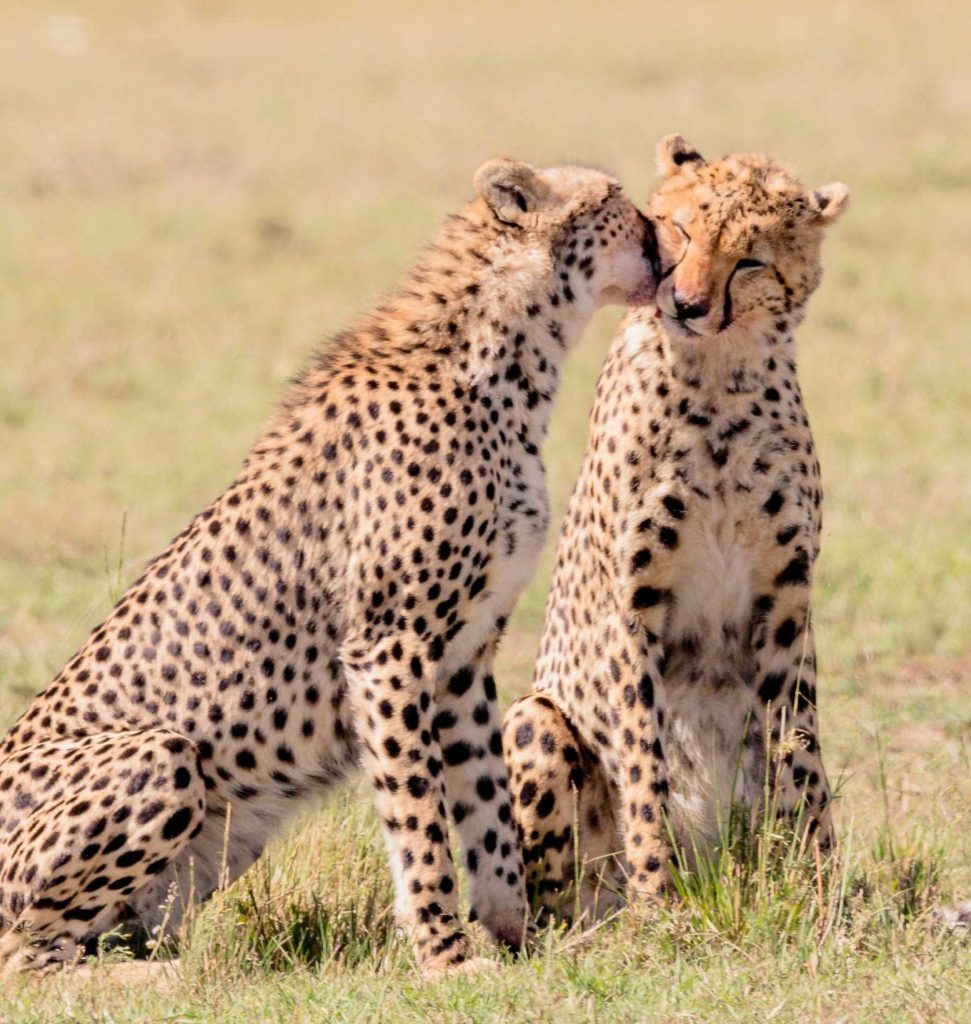
Botswana has many reserves, parks and open plains where you can find cheetahs in their natural habitat.
As mentioned above, the Kgalagadi Transfrontier Park on the border between South Africa and Botswana might just be the absolute best place to spot cheetahs in Africa.
Want to spot cheetahs in their element? Here are some prime locations without the fluff:
- Kgalagadi Transfrontier Park, South Africa: Known for its high cheetah population and ideal terrain. Go during springbok birthing season (cheetahs love this time for snacks).
- Moremi Game Reserve, Botswana: Situated in Botswana’s Okavango Delta, it’s excellent for cheetah sightings.
- Central Kalahari Game Reserve (CKGR), Botswana: One of the world’s largest game reserves, CKGR is remote and a top African destination for cheetah sightings. Its flat landscape makes spotting these speedsters a breeze, but access is limited to 4×4 vehicles, so be prepared.
- Linyanti Region, Botswana: This area includes reserves like Kwando, Linyanti, and Selinda, all teeming with wildlife. Join a guided expedition to the open plains for an excellent chance to witness cheetahs in action. Plus, Linyanti is conveniently close to Chobe National Park, so you can double up on game drives.
These spots offer thrilling opportunities to encounter cheetahs in their natural habitats, no frills attached!
Operators:
- Kgalagadi Transfrontier Park
- Moremi Game Reserve
- Central Kalahari Game Reserve (CKGR)
- Kwando
- Linyanti
- Selinda
- Chobe National Park
3. Kenya
Kenya’s Masai Mara National Reserve is without a doubt one of the best places to spot cheetahs in Africa. It’s also a place where the curious animal has been known to jump on top of safari vehicles!
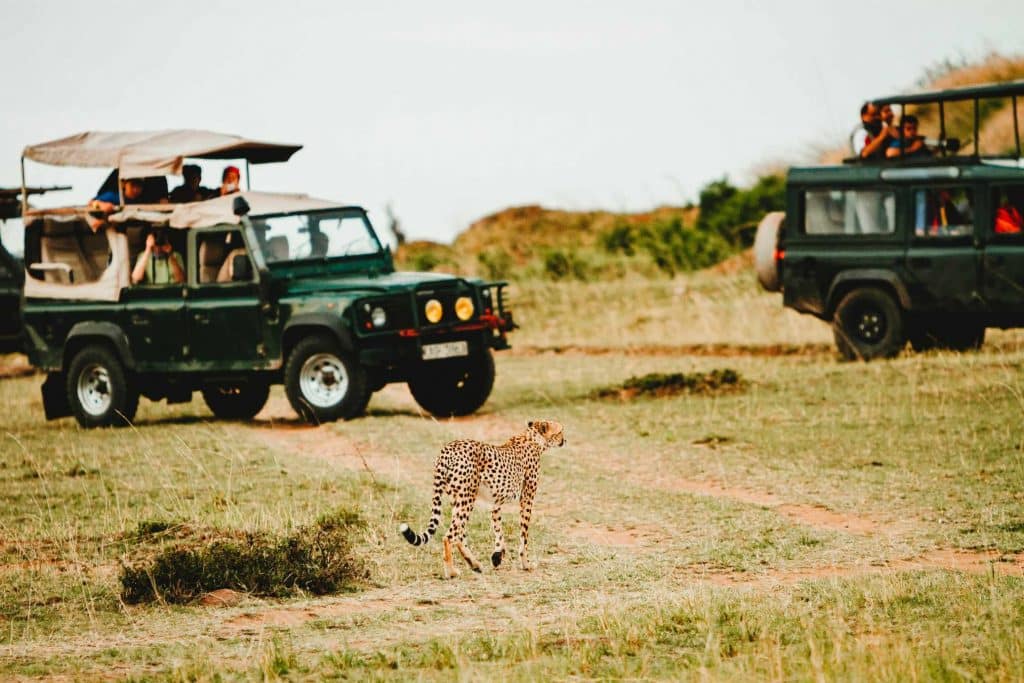
The park is home to the Mara Cheetah Project, which regularly tracks the movements of local cheetahs. The annual wildebeest migration is the best time to go in order to see cheetahs stalking the large amounts of prey that come through the area.
Cheetah sightings occur regularly at Masai Mara and also in surrounding conservancies, like Mara North and Naboisho. The open country of Tsavo East and Amboseli national parks are other good cheetah spotting places to keep in mind.
Operators:
4. Tanzania
Tanzania is home to the Serengeti – one of the Seven Natural Wonders of Africa, along with The Nile River of Egypt, Sahara Desert (which traverses 11 countries), and the Okavango Delta of Botswana. It has deep significance to the heritage of the area and is famous the world over not just for its natural wonders but for its world-class accommodation facilities and safari tours.
The Serengeti National Park is a fabulous cheetah habitat adjacent to Kenya’s Maasai Mara park. During migration times, cheetahs prowl the area, looking for a meal among the thousands of animals who trek through the park. The terrain in the Serengeti is ideal for spotting cheetahs due to the sparse savanna grass and open plains.
The Ndutu Safari Lodge claims it is one of the best places in the Serengeti to spot them, and guests regularly record sightings there. The best time to go is around February and March, when the grass is short.
Amazin places to Encounter Wild Cheetahs.
Despite the dense predator numbers of lions, leopards and wild dogs, Ruaha National Park and Tarangire are also good locations to seek out wild cheetahs on safari.
Operators:
5. Zambia
Kafue National Park in Zambia is excellent for cheetah sightings. As the oldest and largest park in Zambia, you can be sure there is going to be a lot of cheetahs and other wildlife to spot here!
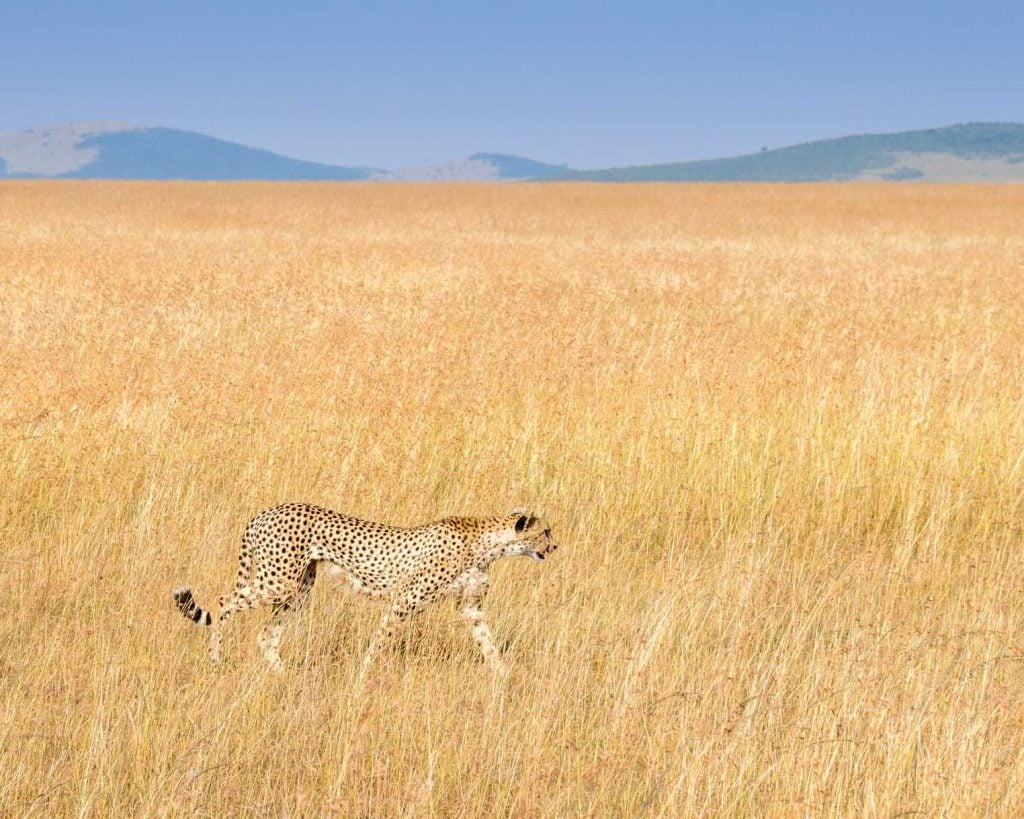
The area is mostly flat with a few granite hills dotting the landscape, making scanning the area with your binoculars fairly easy. There is a high concentration of wildlife in the floodplains, and cheetahs regularly come into the area to chase them down.
Other possibilities for places to encounter cheetahs in the wild in Zambia include South Luangwa and Liuwa Plain national parks.
Operators:
6. Namibia
Namibia has the largest population of cheetahs in Africa. Many of them roam across the farmlands throughout the country, but one of the best places to encounter cheetahs in the wild of Namibia would be in the Etosha National Park.
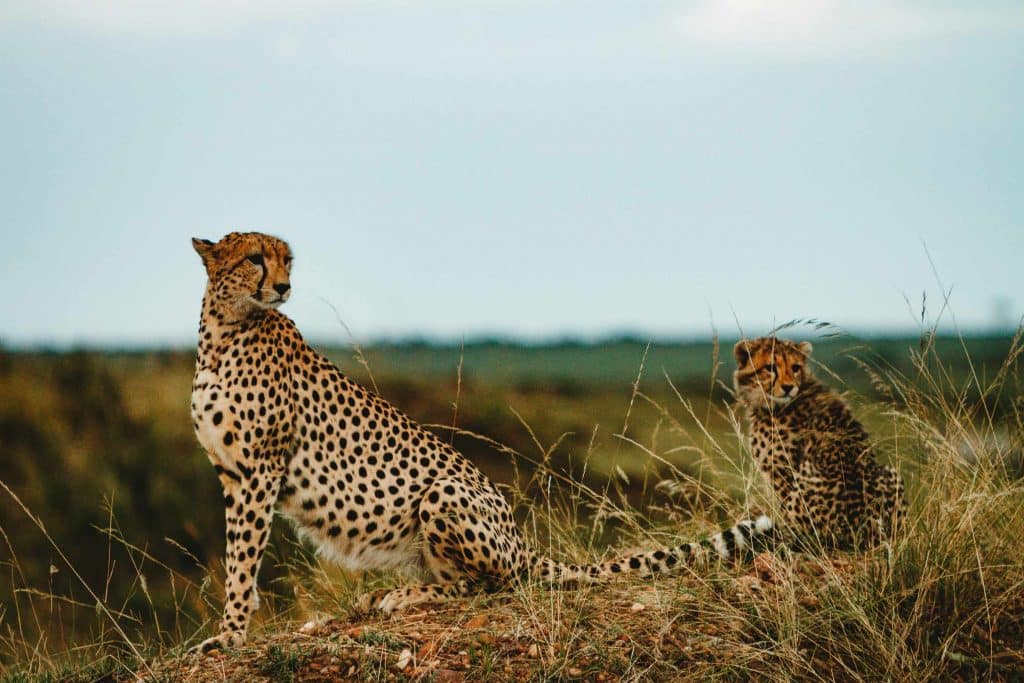
Etosha is quite a dry park, so going to the water hole will definitely reward you with some stunning wild animals to see, including cheetahs if you are lucky. Game animals tend to congregate around watering holes, and cheetahs follow the game. Other than that, stick to exploring the vast open plains and keep your binoculars handy!
Other places that offer great chances of seeing cheetahs in Namibia are the Okonjima and Erindi private reserves.
Okonjima is home to the Africat Foundation and is a significant rehabilitation center for cheetahs. Although it is not a safari destination, it is a wonderful stopover for anyone traveling by road to Etosha Park.
Operators:
Summary on The 6 Best Places to See Cheetahs
The cheetah is not just the fastest land animal on the planet. It is also one of the most graceful. But due to their dwindling numbers, they can be hard to find: with less than 10 thousand individuals left in the wild, cheetahs are now Africa’s most endangered big cat.
Here’s a complete map of all the best spots to encounter cheetahs in the wild:
Cheetahs are very unique among other big cats, with their big range of vocal sounds and non-retractable claws. There are far fewer cheetahs than there are lions and leopards in Africa, so finding them can require careful preparation.
Are you a fan ob big cats? Have a look at our articles on big cats. Thanks for reading The 6 Best Places to See Cheetahs.
- Beluga Whales - April 22, 2024
- Animals and Wildlife in Germany - April 22, 2024
- Where to See Chimpanzees - April 22, 2024

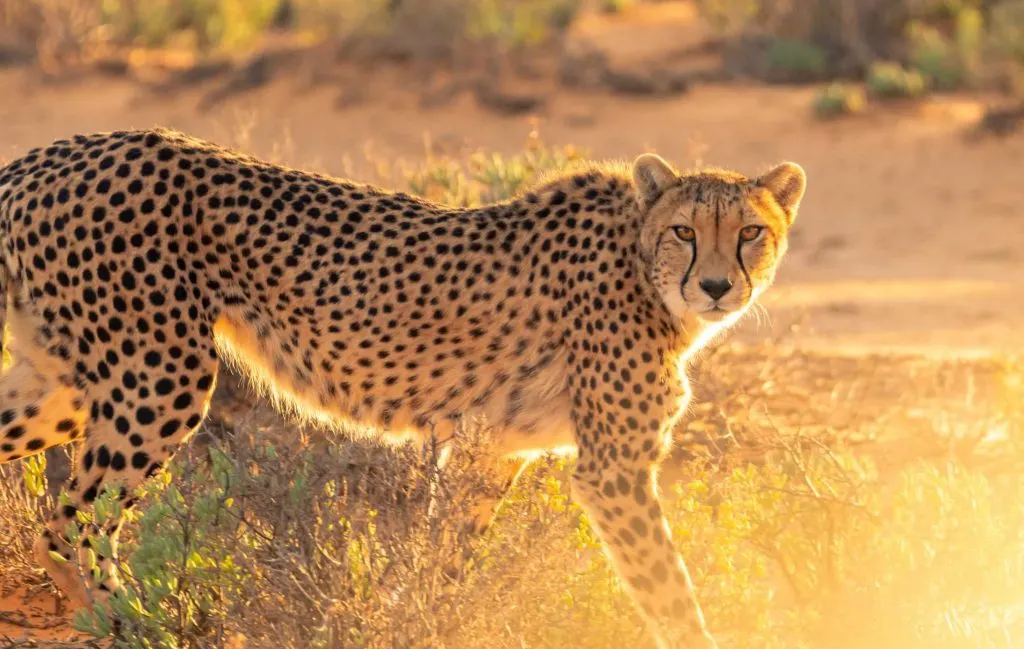

Ashleigh Heath
Monday 29th of June 2020
That slo-mo video of the running cheetah had me gawking at my laptop screen! Absolutely magnificent creature! Also, 10m stride? How??